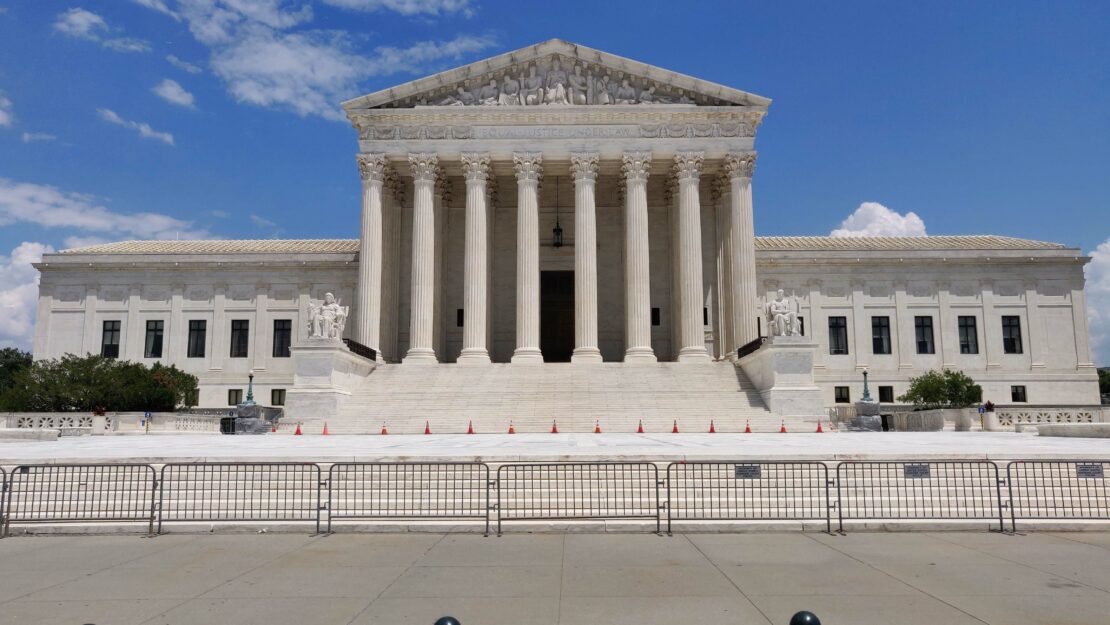A New Age of Environmental Law

By Emma Klemmensen, Mankato 2 Field Crew Member
In times as interesting as these, there will always be things that take us by surprise, but not as often events that could have the ability to alter our governmental processes. As some may know, the Chevron deference doctrine was recently overturned by the Supreme Court. Chevron is a 1984 landmark decision which gives the governmental agencies the right to determine the details of laws made by congress through deference to the agency whose duty it is to administer that specific law. In simpler terms, this means that the scientists, specialists, and researchers working for the federal agencies are the people who determine what the measurable is in a lot of situations. For example, the EPA defines what it means to “restore and maintain the chemical, physical, and biological integrity of the Nation’s waters” (“Clean Water Act (CWA) and Federal Facilities | US EPA”), like how much of particular pollutants can be considered ‘safe’, the pH, etc.) under the Clean Water Act which was made by congress. This is an important decision because the federal agencies have the expertise that’s necessary for interpreting the laws in ways that maintain the safety and wellbeing of the people and environments of the United States.
The doctrine was established when Chevron (Chevron U.S.A. Inc., the oil and gas company) challenged the EPA’s interpretation of the term ‘source’ in the Clean Air Act. With the Natural Resources Defense Council as a respondent, the supreme court decided that the terminology provided by the EPA to specify within the Clean Air Act was appropriate for a ‘reasonable interpretation’ of the phrase ‘stationary source’ (“Chevron U. S. A. Inc. v. Natural Resources Defense Council, Inc.”).
Due to the nature of the doctrine, this decision impacts many facets of the lives of Americans being that it gives the power of definition to those who should know the most about the topics that the agency is in charge of administering; however, on June 28, 2024, the Supreme Court overruled the Chevron Doctrine. This time around it was through a case regarding fisheries called Loper Bright Enterprises v. Raimondo, the secretary of commerce (“LOPER BRIGHT ENTERPRISES ET AL. v. RAIMONDO, SECRETARY OF COMMERCE, ET AL.”). Although this decision had previously given bearing to many environmental laws, it also has effects on public health and many other aspects on our lives due to the countless administrative agencies (“Supreme Court Chevron Decision: What It Means for Federal Regulations | AP News”). With this, it’s also likely that there will be a power shift from the executive branch to the courts due to the details and the final interpretation now being up to federal judges’ discretion (“Supreme Court Chevron Decision: What It Means for Federal Regulations | AP News”).
In all, it will take time to exemplify whether the overturn provides beneficiality to the function of our governmental protections and what the true effects will be. I also must mention that this is a complicated piece of law to entirely grasp without extensive research, so if you’d like to learn more I’ve provided some links that could be found helpful. For now, especially for members serving with a federal agency, it’s important to work towards environmental stewardship as one and recall our shared goals, especially with so much divide, change, and turmoil recently. Additionally, in such a dramatic phase of world events and such it’s necessary to practice our own climactic resilience by continuance of our service to the environment, eachother, and the wellbeing of Americans.
If you’d like to read more:
- Court documents from Chevron v. NRDC
- “The Significance of Chevron Deference”
- “The Supreme Court Ends Chevron Deference—What Now?”
- “Supreme Court strikes down Chevron, curtailing power of federal agencies”
- “The End of Chevron..”
Works Cited
“Chevron U. S. A. Inc. v. Natural Resources Defense Council, Inc.” Oyez, https://www.oyez.org/cases/1983/82-1005. Accessed 19 July 2024.
“Clean Water Act (CWA) and Federal Facilities | US EPA.” US EPA, 20 Aug. 2013, https://www.epa.gov/enforcement/clean-water-act-cwa-and-federal-facilities#:~:text=CWA%20is%20the%20primary%20Federal,in%20compliance%20with%20a%20permit.
“Justia US Supreme Court Center.” Justia Law, https://supreme.justia.com. Accessed 19 July 2024.
“LOPER BRIGHT ENTERPRISES ET AL. v. RAIMONDO, SECRETARY OF COMMERCE, ET AL.” Home – Supreme Court of the United States, https://www.supremecourt.gov/opinions/23pdf/22-451_7m58. Accessed 19 July 2024.
“Supreme Court Chevron Decision: What It Means for Federal Regulations | AP News.” AP News, AP News, 28 June 2024, https://apnews.com/article/supreme-court-chevron-regulations-environment-4ae73d5a79cabadff4da8f7e16669929.